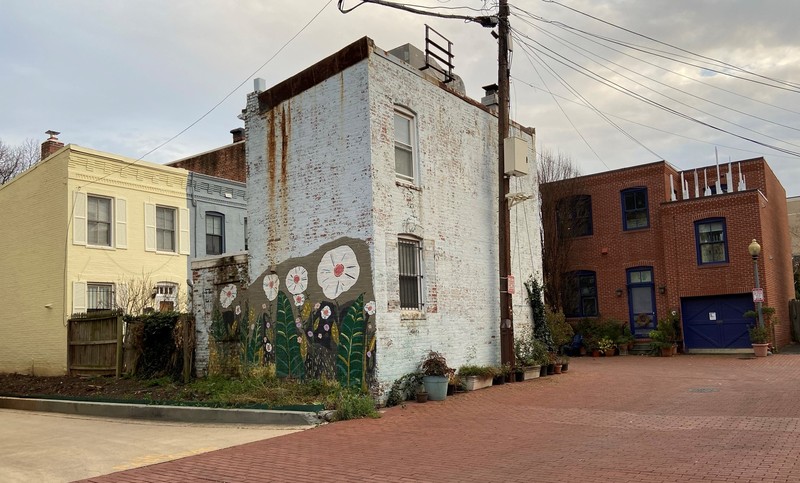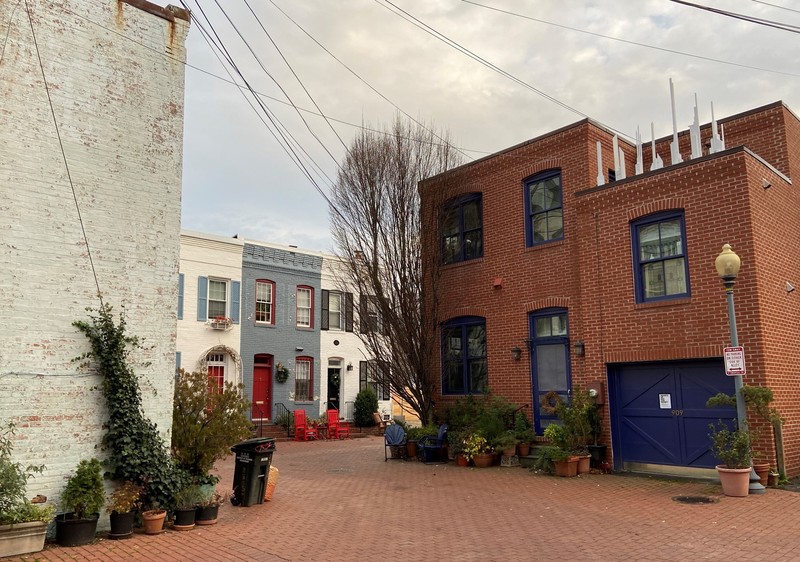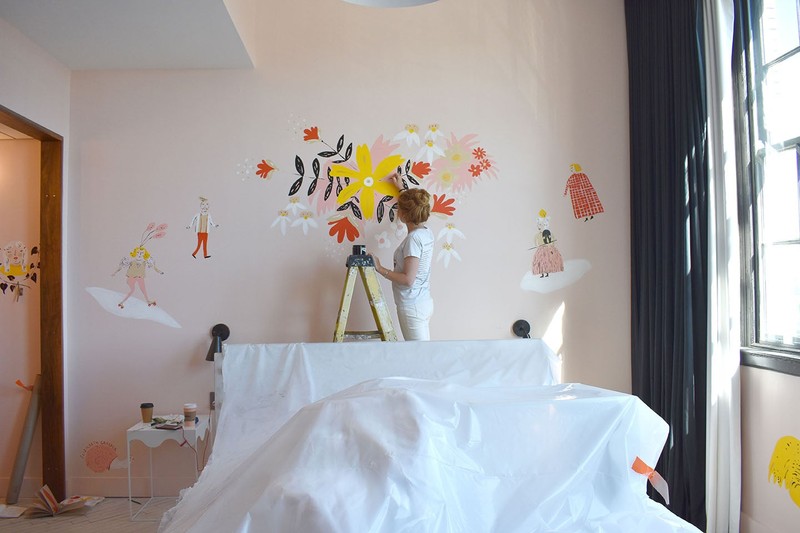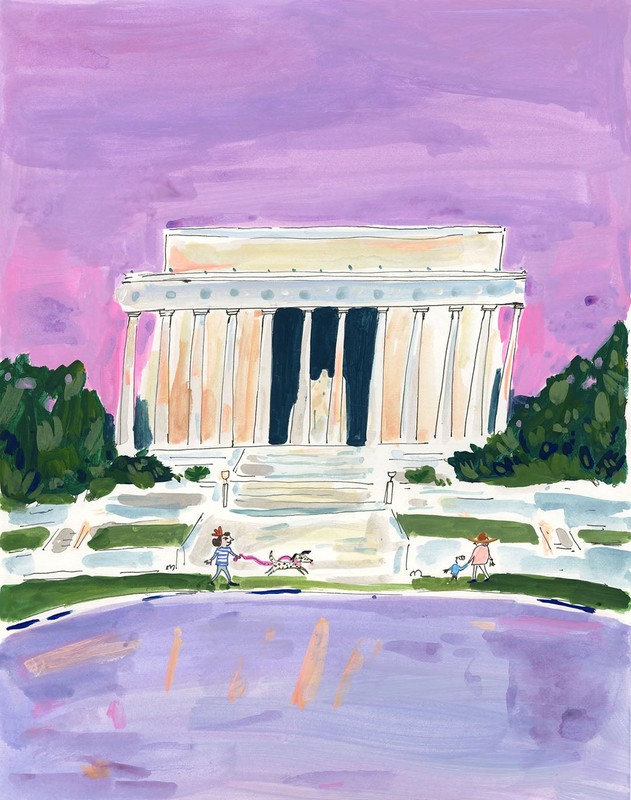Larger than Life "Garden" Mural
Introduction
Text-to-speech Audio
At the River Inn hotel, turn left down the alley past the parking area past the hotel's parking area. On your left you'll see the large flower garden mural. The "Garden" is painted on the rear façade of an historic row house at 923 Hughes Mews. It was created as part of the Arts in Foggy Bottom exhibition in 2014. Artist Elizabeth Graeber painted the image freehand using acrylic interior and exterior house paint. The garden mural seems fitting in an alley where there is little soil to plant a real gardens.
Continue past the mural to visit the corner of Hughes Mews, which contains a small and picturesque group of historic alley row houses from the 1880s. The modern square brick house (909 Hughes Mews) replaced a one-story garage in 2002. Note the container garden that surrounds the house and the white sculptures on the roof above the garage door. After you leave the courtyard area, exit Hughes Mews by turning left on Queen Anne's Lane to 26th Street.
Images
Graeber' "Garden" mural is always in bloom
.jpg)
Graeber's mural (sideview) at the entry to Hughes Mews historic row house area

Gardens surround artist J. Ford Huffman's red brick house in Hughes Mews

Graeber at work on a wall mural.

Graeber's Lincoln Memorial (just down the road from Foggy Bottom)

Backstory and Context
Text-to-speech Audio
Elizabeth Graeber is an artist and illustrator who lives in Baltimore, Maryland and a graduate of Maryland Institute of Contemporary Art. She draws for books, magazines, shops and personal commissions. Graeber works primarily in watercolor and gouache paint on paper, but also paints interior and exterior murals. She is inspired by color and pattern and enjoys painting a series of things such as birds, books, furniture, plants, matchbooks, and food.
Hughes Mews - originally known as Hughes Court - in the 1890s housed 300 people, as many as resided in one of D.C.’s first alley settlements, nearby Snows Court (its main entrance on the opposite side of 25th Street). Hughes Court shared Snows Court’s bad reputation as being overcrowded, unsanitary, and unsafe. As with Snows Court, that reputation ignored the presence of the alley's low-income, but close-knit and vibrant community.
Cite This Entry
FBA History Project, . "Larger than Life "Garden" Mural." Clio: Your Guide to History. February 15, 2022. Accessed April 17, 2025. https://theclio.com/entry/144947
Sources
Elizabeth Graeber, Transformer Flatfile (link below)
Arts in Foggy Bottom, 2014 (link below)
Personal communication
James Borchert, Alley Life in Washington, 1982
Kim Williams, The DC Historic Alley Buildings Survey, D.C. Historic Preservation Office, 2014
Foggy Bottom Association, Arts in Foggy Bottom Exhibition, 2014
Vogt/Leone 2021
Leone/Vogt, 2021
Graeber's website (link below)
Graeber's website (link below)

